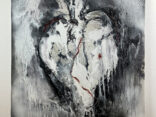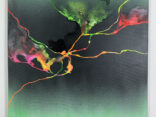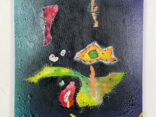Autore
Indice
- Ethics and Eating an Animal
- Cultivated Meat under a Surpassed Paradigm
- The Biosemiotic Paradigm
- The Biosemiotic view between Nature and Culture
- Biosemiotics and Cultivated Food
- Conclusion
↓ download pdf
S&F_n. 31_2024
Abstract
For a Biosemiotics of Cultivated Meat: Cell-Based Food and Its Positioning Between Nature and Culture
The production of cultivated meat, which allows companies to produce meat without raising or killing animals, may potentially solve many of today’s problems connected to meat production. However, cultivated meat is too often seen as “artificial”, “synthetic” and in the end “against” something else. This also raises issues concerning the ethics of communication, very often based on this misleading opposition. This article challenges the philosophical stance at the basis of this misrepresentation and suggests an advanced vision enabling a new and more balanced vision. It starts from the idea of the relationship between Nature and Culture. Theoretically, thus, this article draws on biosemiotics, and specifically on Sebeok and Martinelli, who prefigure a different relationship between Nature and Culture, where Culture is not separated from or in contrast to Nature,but is a part of it. Beyond culture, this article even philosophically supports the idea that cultivated meat is not an absolute novelty suddenly landed on the planet Earth and contrasting all the notions and the rules regulating the cycle of meat. It is instead a further step of a long cultural process leading to consider non-human and human animals as citizens of the same environment. In this light, cultured meat is more simply a new kind of meat, the last type of it so far: a product that is more related to traditional meat than old rigid paradigms could theorize. It is under these new perspective, thus, that cultivated meat may be communicated in a more informed and balanced way.
- Ethics and Eating an Animal
Since antiquity, the human habit of eating animals has raised ethical questions that have to do with problems such as the relationships between Nature and Culture and our position on the planet. Plato and Aristotle took opposite positions even on meat eating. In Plato’s The Republic[1], Socrates advances that the ideal city is the vegetarian one. Meat, by contrast, leads to war and decadence. In Aristotle's Politics[2] instead, it is said that animals are inferior to humans and have no rights in front of them. The universe is built hierarchically and humans are on the top of it. As a result, eating meat is legitimated.
Many other philosophers engaged with the gastronomic and cultural watershed of eating meat ethically. Before Plato, Pythagoras believed in reincarnation and in the fact that a human being may turn into an animal or vice versa[3]. This led the philosopher from Samos to vegetarianism and to the defence of all the forms of animal life. Zeno and Epicurus were vegetarians[4], but in their philosophies allowed meat-eating. Plutarch[5], instead, in book 12 of his Moralia asked whether the human body is created to eat meat. He does not believe it, and finds eating meat wrong both physically and morally[6].
Among the Christian philosophers, Augustine drew from Aristotle, saw hierarchy in the universe and supports eating meat[7]. Descartes[8] asks whether animals have minds or if they are mechanistic creatures only obeying automatic stimuli, concluding that they are not conscious and do not suffer[9], while in another work[10] he defines animals as animated machines.
For Kant[11] (1956; 1993) animals are inferior beings unable to discern what is good for them. This makes them means and not ends. Thus, humans have no duties toward animals, even though they have to care about them if they want to be good humans. In conclusion, Kant allows eating meat and encourages animal care as well[12]. Illuminism, by centring on rationality and control of instincts, took defence of animals. Rousseau[13] points out that humans do not eat meat naturally, but because of the social roles that it implies. He argues that in fact children are not interested in meat. Conversely, adults (especially men) like it, as they are forced by society to do so. Similarly to Descartes, Voltaire[14] says that animals are not animated machines and that thus humans should stop exploiting them for money and calories.
In the twentieth century, Elias in his The Civilising Process[15] connected meat to human development, underlining that human beings have refined their habits over the years. Specifically, Elias investigates the ways meat has been presented on the table over the ages. In the Middle Ages, the animal was brought to the table and carved by the eaters whole, while since the Renaissance, the parts of the animal which remind us that meat was a living body (the head, tail, feet, etc.) have disappeared from the table to remain in the kitchen. The progressive disappearance of the recognizable animal from the table is for Elias a sign of development and refinement.
Today's factory farming has even increased worries and warnings and the entire production process of meat has constantly been held under ethical scrutiny on the academic, journalistic and cultural level. The pollution created by factory farming, the work conditions of slaughterhouses' employees, and the medicines and chemicals ingested by the animals are among the relevant issues that producing meat massively implies[16]. Factory farming is today considered responsible for producing “two-thirds of human-related nitrous oxide [which] is estimated to have 296 times the global warming potential of CO2”[17].
Even worse, animals “raised in factory farms produce methane from digestion and faeces… [This] is the single-largest source of methane emissions in the United States, and a methane molecule is 23 times as effective at retaining heat as one molecule of carbon dioxide”[18]. Even worse, a factory farm counting on 20,000 cows has a production of sewage comparable to a city of 320,000 people, without the city's sewage facilities. Similarly, the ammonia evaporating from factory farms in the Netherlands is responsible for 30% of acid rains in the same country. Worryingly, the polluted liquids produced by these farms penetrate the land[19]. As a result of all of this, factory farming is damaging the planet on every level: underground, on the surface and in the atmosphere. Finally, factory farming encourages overconsumption of natural resources in a no-sense cycle. In fact, lots of crops are grown to feed animals, which are killed to produce meat that feeds humans. In the end, as many vegetarians and vegans say, it would be more sustainable (and reasonable) to directly grow crops for humans.
- Cultivated Meat under a Surpassed Paradigm
In this context, the production of cultivated meat, which allows humans to produce meat without raising or killing animals, has further heated the debate, as this product on the one hand potentially solves many of today's problems connected to meat production; and on the other hand totally subverts what human beings have done since millenniums, that is, killing animals to produce and eat meat.
These two perspectives have constructed cultivated meat, and food in general, in two opposite ways, increasingly exacerbating their differences, fighting each other and giving this product an unbalanced and unfair representation. To simplify, we call these two different constructions the demonizing and the detaching one, respectively.
The view that seems to be dominant at the moment is certainly the demonizing one. From this perspective, cultivated meat is represented as “artificial” and “synthetic”, the result of the violent behaviour and aggression that humans are exerting on Nature and its immortal rules. Meat, they seem to say, is exclusively the item of food obtained from a precise production process composed of animal killing, slaughtering and cutting carried out traditionally. This is what Nature has given us and what we must respect. Any attempt to go out of it is to be considered as an offence to Nature.
Stano[20] has fruitfully analysed this perspective and the cultural and political context surrounding it. She inserts the opposite views of cultivated foods within a broader opposition Nature/Culture also involving the promotion of the Mediterranean diet and of “natural” categories such as organic foods. Stano semiotically analyses a promotional leaflet produced by Coldiretti, an Italian association of farmers. The document supports “natural” meat against cultivated products, considered as Frankenstein food and demonised as something threatening health and the environment. Stano's investigation highlights the necessity of an enemy for those supporting Nature. Culture, in fact, here becomes dystopia, a cold technology worsening the quality of food just because it contradicts Nature. By demonising Culture, this perspective glorifies Nature. In the end, those who demonise cultivated meat see it “against” something else, which is in turn traditional meat, authenticity, Nature and even history.
This also raises issues concerning the ethics of communication, very often based on this misleading opposition. Certainly the leaflet above mentioned may be explained by the fear of the farmers of being replaced by the researchers in a lab; a fear, we must say, totally unjustified. Surprisingly, however, the demonising representation is also carried out by newspapers, TV news and other journalistic sources, which should balance their account to fairly inform the public. Some news items[21], instead, totally rely on the above-mentioned demonising perspective. This is not the place to study a single item of news in depth; however, it is sufficient to notice the choice of the term “synthetic” instead of “cultivated” to see how a single word may unbalance an entire journalistic account.
The “demonising party” is composed of people working in the field of meat, like the farmers mentioned above, but also of traditionalist and conservationist experts, nature advocates and, clearly, politicians. Demonising cultivated meat has in fact revealed political aims. The recent ban of the ultra-right Italian Government[22] regarding producing, trading and consuming cultivated foods in Italy confirms this. All the political campaign preceding the approval of the law was based on the construction of cultivated meat as something damaging people's health, Italy's economy and Planet Earth's cleanness, even frequently recurring to evident fake news[23].
If the demonizing view has obsessively represented cultured meat as a dystopian and Frankenstein food, the detaching part, composed of scientists and more tech-oriented experts, has constructed cultivated food in an over-technological way, distancing it from the rest of the foods we eat daily. Detachment is the key word to understand the intrinsic nature of this representation. In many media discourses, be visual, textual or other, cultivated meat is continually associated with labs, researchers looking in the microscope, research instruments of any kind, etc.
The websites of Merck[24] and Nissin[25], two companies working on cultivated meat, seem to talk about labs and not food. All of the photos they present depict researchers wearing white coats, microscope slides and other lab tools, and cultivated meat represented in the form of strange cubes hardly identifiable as meat. The Cultivated Meat Consortium[26], to a different degree, combines images of meat on the table and chefs with photos recalling science and labs.
Interestingly, other new companies working on cultivated meat are adopting different strategies. Among them, on the commercial level, Upside Foods[27] and Good Meat[28], and on the academic one, the University of California Davis[29], highlight, to various degrees, the importance of taste and pleasure as the main characteristics of an item of food, even the cultivated ones.
Demonizing and detaching seem not to represent cultivated meat fairly. This article aims to surpass this dichotomy and challenge the philosophical stance on the basis of this misrepresentation. To sum up, we need an advanced point of view enabling a new and more balanced vision. To reach it, however, exclusively talking about traditional and cultivated meat is not sufficient. We need a philosophical assumption as a starting point. This is the relationship between Nature and Culture for us humans.
The communicational items about cultivated meat we have seen so far, both the demonizing and the detaching one, are based on a traditional idea of this relationship, where not only are Nature and Culture separated and without any mutual exchange, but also in contrast to each other. This assumption has already produced many problems for us. If Nature and Culture are separate and in contrast, in fact, and humans pertain exclusively to Culture, we are authorised to destroy Nature, as it does not regard us and we do not live in it, because we belong to Culture. We can thus pollute the other sphere (Nature) and mistreat those who live in it (the non-human animals). The demonization and the detachment of cultured meat is thus just a secondary effect of a bigger issue, the separation between Nature and Culture. The next section starts with biosemiotics and advances a new way of looking at the two entities and their effects on cultivated food.
3. The Biosemiotic Paradigm
According to the website of the international society that gathers its most eminent scholars, “biosemiotics is an interdisciplinary research agenda investigating the myriad forms of communication and signification found in and between living systems”[30].
What is of great relevance to this article is the biosemiotic conception of the relationships between Nature and Culture. Barbieri[31] may help understand. Studying plants and animals might appear to be a big novelty for semiotics, usually applied to artworks, novels, the way people dress or advertising. Actually, this is not so new, as “cultural semiotics can be regarded as a special case of biological semiotics”[32]. Such an assumption radically challenges all of what we have seen regarding Nature and Culture as two separated and contrasting fields. Barbieri surpasses this traditional view down and advances that the semiosis of cultural elements is a part of the broader biological semiosis. This may be explained by the fact that, for the biosemioticians, analysing culture means analysing a part of the natural environment, as Nature and Culture are not separated, but the first contains the second (see Figures 1 and 2).
 Fig. 1 The traditional view of Nature and Culture
Fig. 1 The traditional view of Nature and Culture
 Fig. 2 The biosemiotic view
Fig. 2 The biosemiotic view
- The Biosemiotic view between Nature and Culture
The concept was first conceived by Sebeok[33], the recognised founder of biosemiotics, and also explained by Martinelli[34] (2010). They have constructed a more holistic paradigm in which Culture, that is, human intervention, is seen as a part of Nature. Human beings are a part of Nature like any living being on this planet, but their cultural abilities allow them to play a different role. As a result, Nature involves everything, even what humans produce (Culture), as it is made by the brain, an organ given to humans by Nature. All of this also reduces the difference, for example, between a beehive and a building created by an architect, as they are both forms of expression created by living beings inhabiting the same realm.
What is more, if Nature and Culture are not separated or in contrast, this new biosemiotic vision does not justify pollution or animal killing, as humans and non-humans live in the same area, and damaging the planet or killing non-human animals for humans would mean damaging themselves and their realm.
5. Biosemiotics and Cultivated Food
Relating to this definition, it should be clear that cultivated meat is a living system. It is made up of living elements, and during its production process, it grows and adds new tissue to itself. This is to say that biosemiotics, which concerns living systems as said above, can fully be applied to cultivated foods in general and cultivated meat specifically.
The biosemiotic view of the relationship between Nature and Culture immediately suggests that the traditional opposition demonization/detachment is obsolete. The biosemiotic perspective sees meat (Nature) and cultivated meat (Culture) in the same area (see Figures 3 and 4).

Fig. 3 The traditional view of traditional and cultivated meat
 Fig. 4 The Biosemiotic view
Fig. 4 The Biosemiotic view
This newer paradigm sustains what I had already found at the level of cultural history[35] and media analysis[36]. Culturally speaking, we may say that since the Renaissance, humans have striven to separate the idea of the animal from that of meat. This happened firstly during the stage of consumption, when, gradually, the whole animal was not taken to the table any more and thus humans gradually did not see animal forms (head, legs, etc.) on the plate[37], apart from some provocative exceptions; secondly, on the stage of preparation, when the whole animal also disappeared from the kitchen because it was cut and made unrecognizable at earlier stages of the production process[38]; thirdly, on the level of distribution when slaughterhouses were confined out of the city centres and their doors were closed, so that citizens could not see what happened in them[39]; fourthly, on the level of the market, when butcher shops did not show whole dead animals inside and outside their doors[40]. Finally, on the level of production, thanks to cultivated meat[41]. This has led to the media construction of cultivated meat either as a dystopic food or as the solution to all the problems of Planet Earth.
What was a cultural-historic and media studies assumption has become a philosophical stance thanks to what I have discussed in this article, which is also clarified by the figures above. This paradigm shift, moreover, as any change in the way we see things, has cascading effects on the way we may perceive cultivated food in the neat future. It means that cultivated meat is not an absolute novelty that suddenly landed on Planet Earth contrasting all the notions and the rules regulating the cycle of meat. It is instead a kind of meat much more similar to the traditional one than we may imagine and old rigid paradigms have been able to theorize. It in fact stems from the same environment from which stems the traditional steak. In this light, cultivated meat is simply a new kind of meat, the last type of it so far, until another kind will emerge. It is under this new perspective, thus, that cultivated meat may be communicated in a more informed and balanced way, leaving aside the rigid categories of demonization and detachment that have affected its representation since its creation.
- Conclusion
This article starts from my previous studies on the communication of cultivated meat and its cultural history roots. Drawing on them, firstly I have investigated more in depth the reasons why this product is very often represented in such an exacerbated way, finding the answer to this question in a surpassed and disputable conception of Nature and Culture. Cultivated food is very often seen as dystopic, the result of scientific and hazardous experiments carried out by irresponsible scientists, what this article has called “the demonizing representation”. This partial view is fought by cultivated food advocates who advance a detaching representation of this item of food, that is, the idea that cultivated meat is totally different from the other food we eat daily, as it is created in aseptic environments such as labs and research institutes, a vision forming what we have termed “the detaching representation”.
Secondly, I have proposed a new philosophical paradigm assuming a different relationship between Nature and Culture and thus allowing a more balanced representation of this item of food. The paradigm that I have proposed is the biosemiotic one, which relies on Nature and Culture not as separated and in contrast, but bound to each other in a mutual and harmonious relationship.
Beyond this, what has emerged throughout this article is the pertinence of biosemiotics to the study of cultivated food and the relevance of this branch of semiotics to ethical issues. This may be of paramount importance for both the topics of this study, cultivated food and biosemiotics.
Studies in cultivated foods have developed in two different directions, the bio-science and the social science. The two strands have rarely talked to each other and the final result of this dichotomy has been a substantial split of this item of food into two different products, the biological cultivated meat described according to its technological processes occurring in the labs, and the social cultivated meat investigated through its cultural, religious or political effects. All these studies are certainly fundamental, but all of them (even mine) have never given the reader a thorough account of the product.
Biosemiotics, since its name, promises a combination of the two components. It seems clear that biosemiotic analyses of cultivated food would allow the researcher to link biological characteristics and social meaning to each other, as (sorry for repeating it) “cultural semiotics can be regarded as a special case of biological semiotics”[42]. This mutual connection will permit biosemioticians to analyse this item of food from a third and more complete point of view and thus reach new results.
If research on cultivated meat will certainly benefit from biosemiotics, however, it is also true the contrary. Biosemiotics is a still relatively young discipline investigating signs, codes and the construction of meaning in living systems. It has given straightforward results in its insights regarding animals, plants, biological organisms and the way they interact among them and with us. Thus, it studies signs that Nature has created and enacted and their relationships with Culture. Cultivated meat is a further challenge for this discipline, as it comprises Nature and Culture in the same item, being somehow “culturalized” Nature. If cultivated foods will become as relevant as they seem destined to be today, biosemiotics might constitute the right eye to understand this world that is certainly fascinating but that also needs balanced insight to answer the many questions we still ask about it.
[1] Plato, The Republic (about 375 B.C), G.R.F. Ferrari (eds.), tr. ing. Cambridge University Press, Cambridge 2000.
[2] Aristotle, Politics (Fourth century B.C.), B. Jewett (eds.), tr. ing. Dover Publications, New York 2000.
[3] E. Orlin, S. Lisbeth, S. Fried, J. Wright Knust, M. L. Satlow, and M. E. Pregil, The Routledge Encyclopedia of Ancient Mediterranean Religions, Routledge, New York 2016.
[4] C. Spencer, The heretic’s feast: A history of vegetarianism, University Press of New England, Hanover 1995.
[5] Plutarch, Moralia (First century), F.C. Babbitt (eds.), tr. ing. Harvard University Press, Cambridge (MA) 2004.
[6] C. Spencer, The heretic’s feast: A history of vegetarianism, cit.
[7] Ibid; T.A. Borlik, Ecocriticism and early modern English literature: Green pastures, Routledge, New York 2011.
[8] R. Descartes, Letter to Henry Moore (1649). In R. Descartes, Philosophical Letters, A. Kenny (eds.), Clarendon Press, tr. ing. Oxford 1970, p. 245.
[9] G.L. Francione, Animals: Property or persons? In Animal rights: Current debate and new directions, C. R. Sunstein and M.C. Nussbaum (eds.), Oxford University Press, Oxford 2004, p. 108–142.
[10] R. Descartes, Discourse on method and meditations on first philosophy (1637), 4th ed., Donald A. Cress (eds.), tr. ing. Hackett Publishing Company, Indianapolis 1998.
[11] I. Kant, Groundwork of the metaphysics of morals (1785), M. Gregor (eds.), tr. ing. Cambridge University Press, Cambridge 1997; I. Kant,. Critique of practical reason (1788), M. Gregor (eds.), tr. ing. Cambridge University Press, Cambridge 1997.
[12] G.L. Francione, op. cit.
[13] J.J. Rousseau, Emile, or on education (1762), Barbara Foxley (eds.), tr. ing. The Floating Press, Auckland 2009.
[14] Voltaire, A philosophical dictionary (1764), H.I. Woolf (eds.), tr. ing. Knopf, New York 1924.
[15] N. Elias, The Civilising Process: The History of Manners (1939), tr. ing. Blackwell, Oxford 1969.
[16] S. Fairlie, Meat: A benign extravagance, Permanent Publications, East Meon 2010; G. Hyslop, Stem cells could revolutionise the food industry, in «South African Food Review» XXXIX, 3, 2012 p. 16.
[17] D. Mulvaney and P. Robbins, Green food: An A to Z guide, Sage, London 2011, pp. 147.
[18] B.E. Johansen, The encyclopedia of global warming science and technology, vol. 1, ABC-CLIO, Santa Barbara 2009, p. 258.
[19] H. Norberg-Hodge, P. Goering, and J. Page, From the ground up: Rethinking industrial agriculture, 2nd ed., Zed Books, London 2001.
[20] S. Stano, Critique of Pure Nature, Springer, Cham 2023.
[21] A. Barbieri, Carne artificiale: Ecco dieci motivi per non mangiarla. «Libero», 18 November 2023. https://www.liberoquotidiano.it/news/scienze-tech/alimentazione-e-benessere/37577515/carne-artificiale-dieci-motivi-non-mangiarla.html.
[22] E. Lauria, Carne coltivata, il governo si impegna a rispettare indicazioni UE e Mattarella firma il ddl. Meloni a Cop28: No a cibi naturali solo per ricchi. «La Repubblica», 1 December 2023 https://www.repubblica.it/politica/2023/12/01/news/carne_coltivata_governo_meloni_mattarella-421552805/.
[23] Wired, Il nuovo divieto contro la carne coltivata in Italia. Wired 2023, https://www.wired.it/article/carne-coltivata-sintetica-camera-approva-divieto/
[24] Merck, Cultured Meat. Merck 2024. https://www.merckgroup.com/en/research/research-and-development-highlights/cultured-meat.html.
[25] Nissin, Growing Steak Meat in a Lab. Nissin 2024. https://www.nissin.com/en_jp/sustainability/feature/cultured-meat/
[26] Cultivated Meat Consortium.. Cultivated Meat Consortium Welcomes You. Cultivated Meat Consortium 2024. https://www.cultivated-meat.art/
[27] Upside Foods, Meet the New Meat. Upside Foods, 2024. https://upsidefoods.com/.
[28] Good Meat, The Chicken is Here. Good Meat, 2024. https://upsidefoods.com/
[29] University of California Davis, Cultured Meat Consortium, UC Davis, 2024 https://www.merckgroup.com/en/research/research-and-development-highlights/cultured-meat.html.
[30] ISBS, What is Biosemiotics? ISBS, 2024. http://www.biosemiotics.org/biosemiotics-introduction/.
[31] M. Barbieri, The Challenge of Biosemiotics, in M. Barbieri (ed.), Introduction to Biosemiotics: The New Biological Synthesis, Springer, Dordrecht 2008, pp. ix-xii.
[32] Ibid, p. ix.
[33] T.A. Sebeok, How animals communicate, Indiana University Press, Bloomington 1977; T.A. Sebeok, Communication, in T.A. Sebeok, A Sign is Just a Sign, Indiana University Press, Bloomington 1991, pp. 22–35; T.A. Sebeok, Biosemiotics: Its roots, proliferation, and prospects, in «Semiotica» XXXII, 134, 2001, pp. 61–78.
[34] D. Martinelli, A Critical Companion to Zoosemiotics, Springer, Dordrecht 2010.
[35] F. Buscemi, From Killing Cows to Culturing Meat, in «The British Food Journal», CXVI, 6, 2014, pp. 952 – 964; F. Buscemi, From Body Fuel to Universal Poison: Cultural History of Meat 1900-The Present, Springer, Dordrecht 2018.
[36] F. Buscemi, New Meat and the Media Conundrum with Nature and Culture. «Lexia: Journal of Semiotics», VII, 19-20, 2015, pp. 419-434.
[37] N. Elias, op. cit.
[38] J. Goody, Cooking, Cuisine and Class. Cambridge University Press, Cambridge 1982; S. Mennell, All Manners of Food: Eating and Taste in England and Francefrom the Middle Ages to the Present, University of Illinois Press, Champaign 1996.
[39] N. Vialles, Animal to Edible (1987), tr. ing. Cambridge University Press, Cambridge 1994.
[40] S. Mennell, op. cit.
[41] F. Buscemi, From Killing Cows, cit.
[42] M. Barbieri, op. cit., p. ix.








